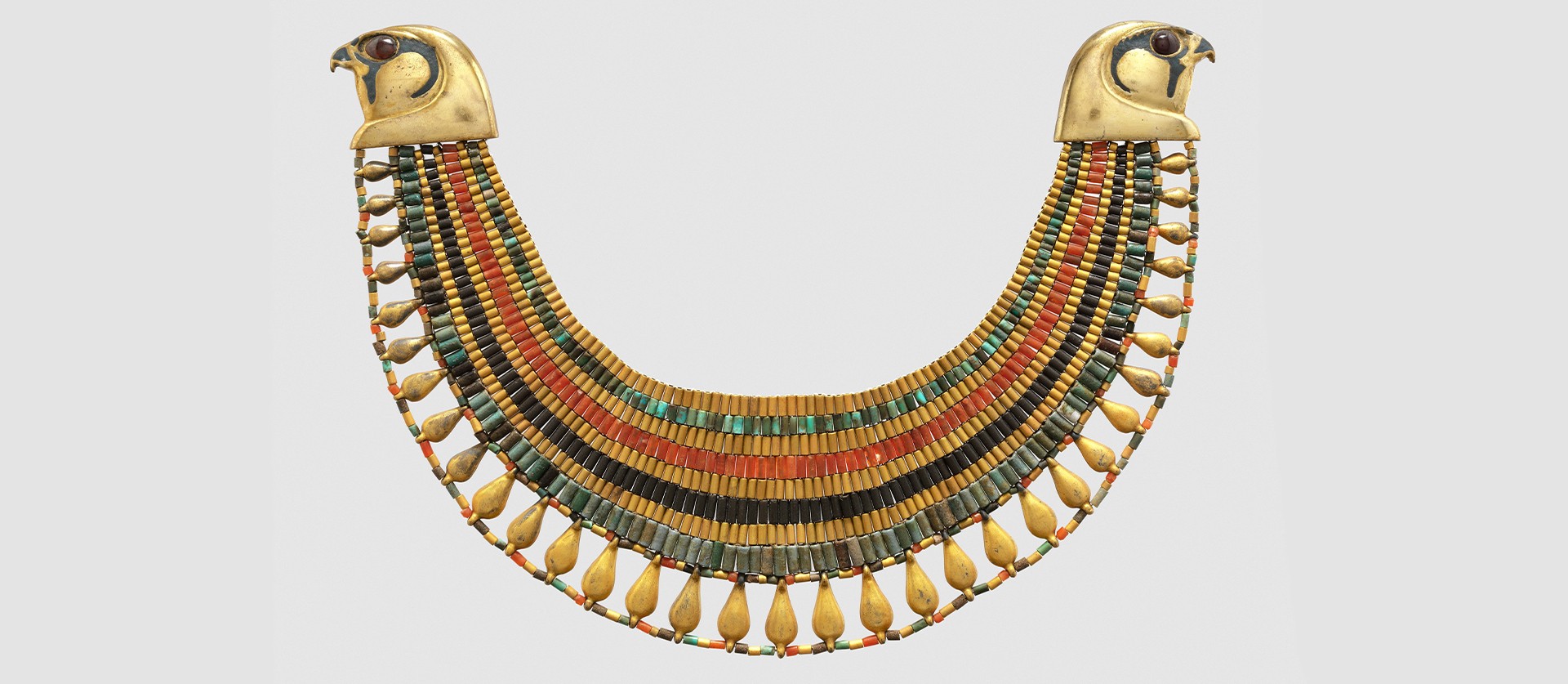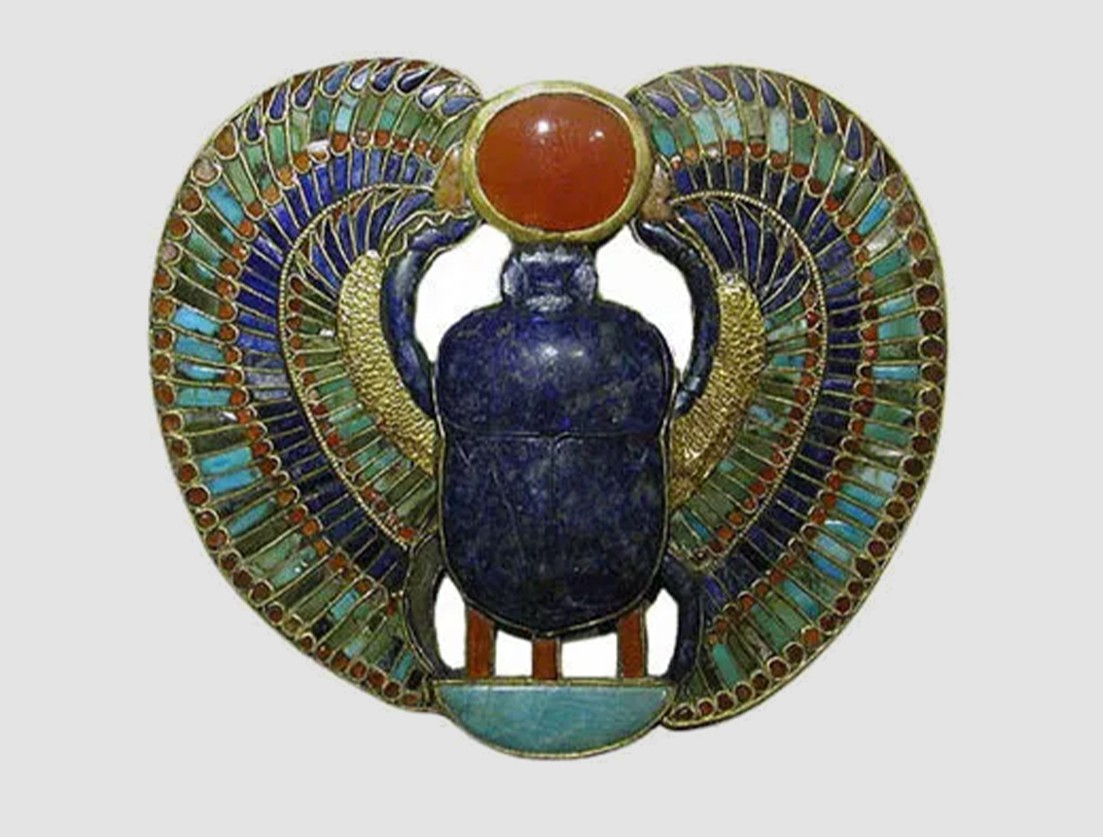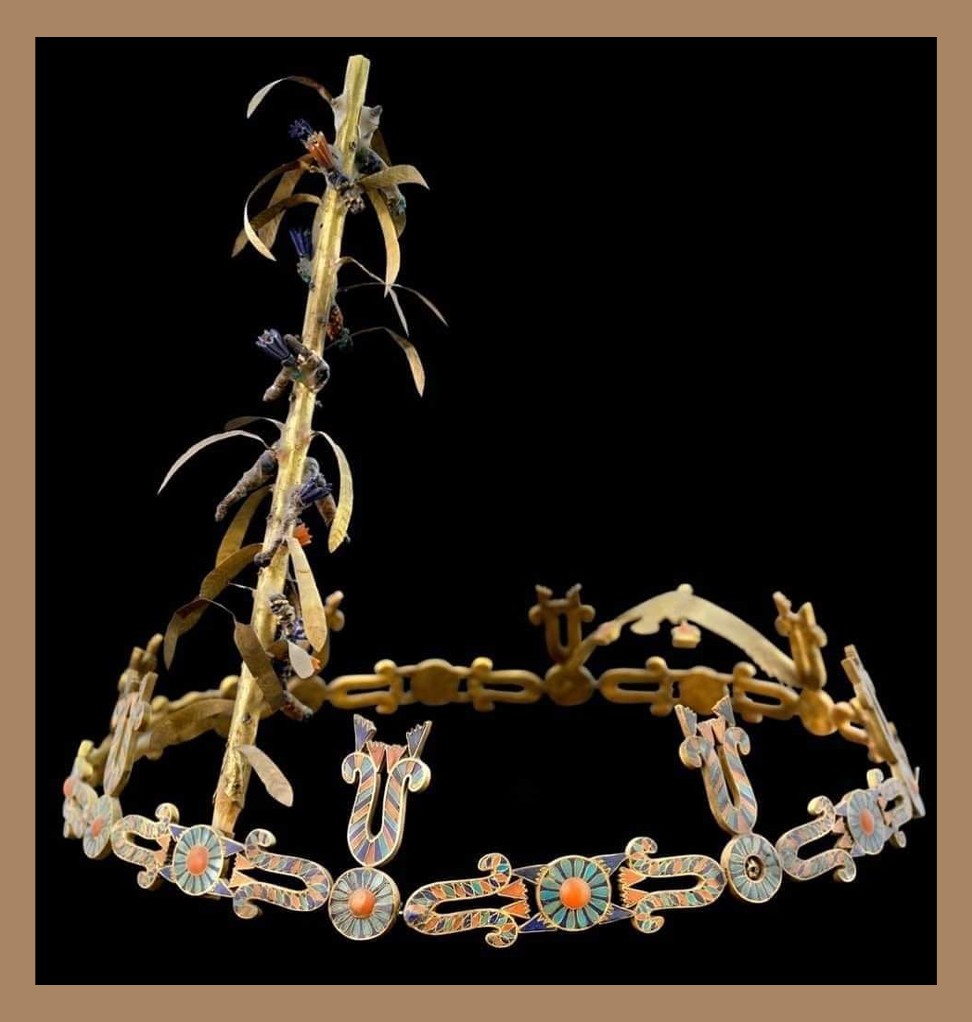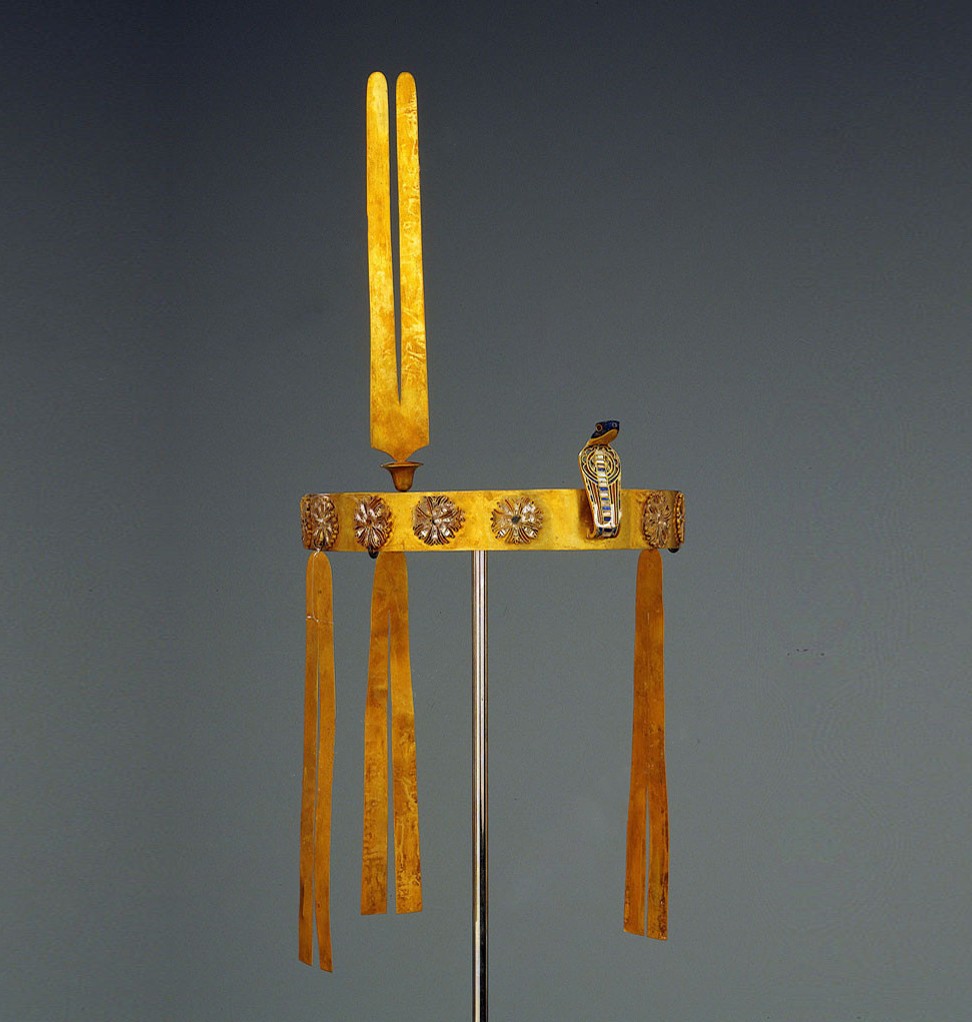Egyptian Jewelry: History, Meaning and Art in the Ornaments of the Pharaohs

Speaking of Egyptian jewelry immediately brings to mind the rich collars of the pharaohs, their golden sarcophagi and the elaborate hair clasps of Queen Cleopatra. The history of jewelry from that era, however, is much more complex: the Egyptians were indeed masters in gold working and ornaments were very widespread among all social classes.
From Large Collars to Hair Rings
In ancient Egypt, the most famous ornament was the usekh collar, worn by pharaohs, queens, and statues representing deities. The name means “wide” and was indeed composed of many gold threads with colored stones, but could also be entirely made of metal. The collar was very heavy, and therefore had counterweights at both ends, called menat, which fell on the back to keep it steady on the shoulders and around the neck.
Jewelry in ancient Egypt included necklaces, wrist and arm bracelets, anklets, earrings, and pectorals. They were worn by men and women, as well as children and animals, such as cats, which were considered sacred. There were also various hair ornaments: the most elaborate were gold and precious stone diadems, but simpler metal headbands and clips were also used.
The Meaning of Jewelry in Ancient Egypt: Adornment, Prestige, and Protection
For the ancient Egyptians, ornaments were daily accessories, which could also become an instrument to assert one’s prestige and social status.
Above all, however, Egyptian jewelry was considered true amulets capable of protecting the wearer from dangers, diseases and all kinds of negative events. Symbolic meanings were attributed to stones and metals: the splendor of gold represented divinity, the red of carnelian blood and therefore life, the blue of lapis lazuli the sky. The emerald, which is said to have been Cleopatra’s favorite stone, for its green color was the symbol of fertility and rebirth.
Jewelry played an essential role in funeral rites as propitiatory instruments for the journey to the afterlife: even mummies, in fact, often wore special necklaces.
Many of the most precious and well-preserved jewelry pieces, moreover, have been discovered in tombs, such as the famous treasure of Princess Khnumit, found in 1894 in the necropolis of Dahshur, not far from Cairo. In her sarcophagus there was a necklace composed of 6 strands of gold pearls alternating with about a hundred hieroglyphs in precious stones; the strands ended with two gold clasps in the shape of a falcon’s head. Another tomb, that of Princess Sithathoriunet, discovered in 1914, contained a diadem, bracelets and pectorals considered among the finest examples of Egyptian jewelry. Today they can be admired at the Metropolitan Museum in New York.
The Ancient Egyptians, Expert Goldsmiths
As we have said, the Egyptians knew well the art of gold working. Initially they used gold dust that deposited on the banks of the Nile, but when this became insufficient for jewelry production they sought gold elsewhere. They found it in the region of Nubia, whose name derives from the Egyptian term nebu, which means precisely “gold”.
The goldsmith’s craft was prestigious in Egyptian society and was passed down from father to son. Artisans specialized in different roles, such as the precious stone engraver, the necklace expert, the bead specialist for collars.
Craftsmen knew how to work with gold, set precious stones, and create refined decorations. Among the techniques used in creating jewelry in ancient Egypt was also enamel decoration. Artisans created small cells by soldering thin gold wires or strips onto a metal plate and inserted glass or stones into these spaces, melting them with heat until creating an enameled mass. The result was a kind of colored mosaic, used for jewelry as well as other decorative objects.

Jewelry with lapis lazuli and enamels, from the treasure of Tutankhamun

